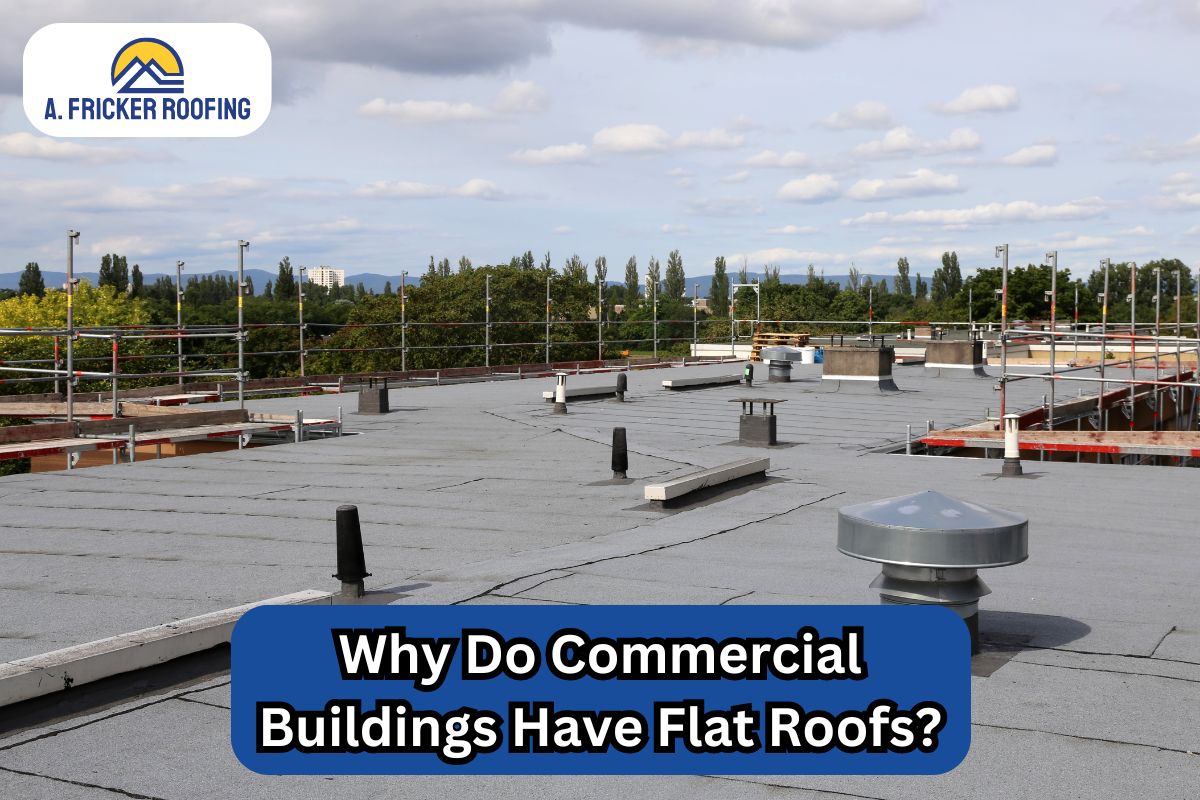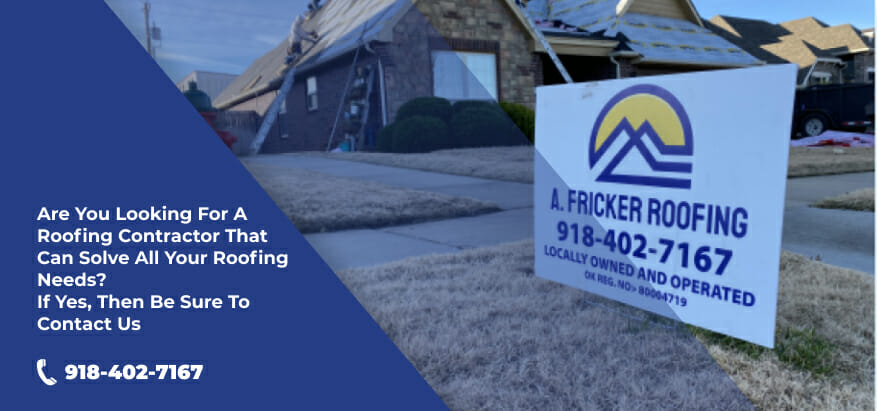When you look at most commercial buildings—office spaces, warehouses, retail stores, factories—one thing you’ll notice is that they tend to have flat roofs. It’s a little different from residential buildings, where you often see more sloped or pitched roofs. So why exactly do commercial buildings have flat roofs? Is it just an architectural preference, or is there more to it? There are several practical reasons why flat roofs make sense for commercial buildings.
If you are also looking to buy or rent a space, this guide can be helpful. Stay with us as we talk about why your commercial property should have a flat roofing system.
#1 Flat Roofs Allow More Usable Space
One of the biggest reasons commercial buildings have flat roofs is simply to make the most of the available space. In a commercial building, every inch counts. Whether it’s a retail store or a large warehouse, businesses need every bit of room to serve their purpose. A flat roof creates extra usable space that sloped roofs cannot.
You get more space both inside and on the roof, here’s how:
- Usable Interior Space: Inside the building, a flat roof allows for maximum headroom and uniform ceiling heights across the structure. It keeps things simple, functional, and straightforward. You won’t find awkwardly sloped ceilings or wasted corners, which is especially important for office buildings where efficiency and layout are key.
- More Roof Area: The exterior of the roof itself is usable space, too. Commercial buildings often use flat roofs to install air conditioning units, solar panels, or even create terraces. These are spaces you cannot get with a pitched roof, and that’s a major plus.
In other words, flat roofs give you more bang for your buck, especially in commercial settings where space utilization is essential for operations.
Also Read: Commercial Flat Roofing: A Brief History and Where We’re Going Next
#2 Flat Roofs Are More Cost-Effective
Flat roofing systems are popular in commercial buildings because they offer more monetary value than a pitched roofing system. Running a business is a very consuming process and you need to keep an eye on costs to ensure things are within your budget.
A pitched roof works well when the area is smaller. But commercial properties often have a larger area and creating a slope can cause roofing costs to skyrocket.
- Lower Material Costs: Flat roofs require fewer materials. Since the roof doesn’t slope, you aren’t dealing with complex angles and extra layers of materials like you would with a pitched roof. All this plays a role in cost.
- Simpler Design, Easier to Build: A flat roof’s design and construction process are simpler. Fewer components mean lower labor costs. Building a flat roof takes less time and is generally easier to execute, making it an attractive option for large commercial projects where time and budget constraints are often tight.
However, note that a roofing contractor will still be necessary to install flat roof materials.
Of course, with any construction, there’s always some maintenance involved, but flat roofs also tend to be easier and cheaper to maintain and repair. We’ll cover this in more detail later on.
#3 You Get More Space For HVAC Systems
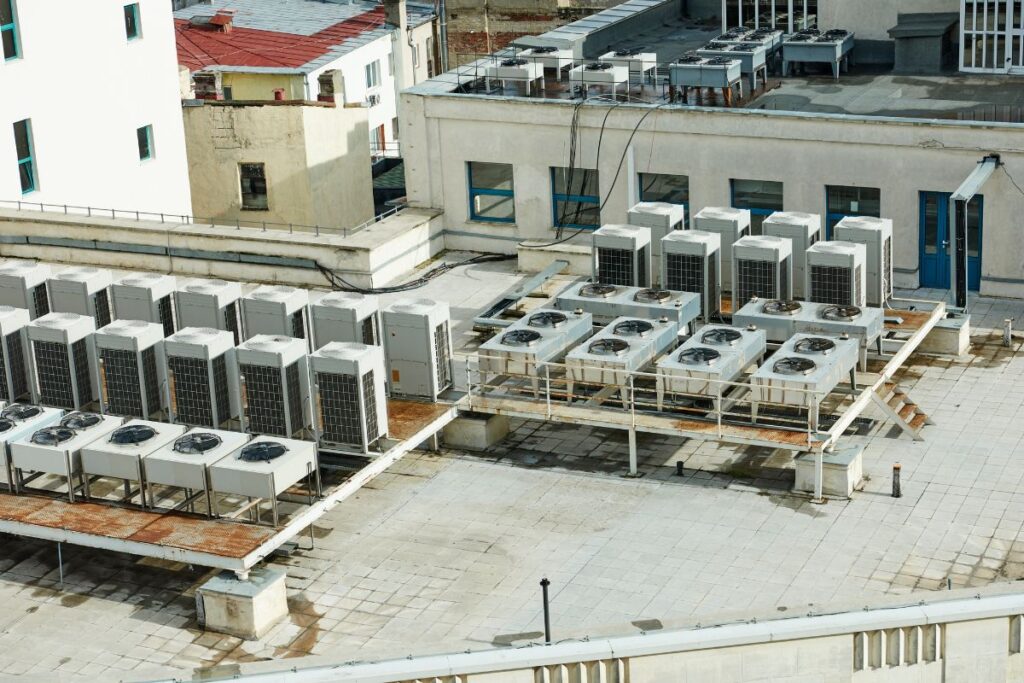
Maintenance is a huge factor when it comes to building design, and flat roofs shine here. Most commercial buildings require large HVAC systems to manage temperature and air quality. These systems are often bulky, and having a flat roof provides the perfect area to place them.
Apart from traditional HVAC systems, flat roofs can accommodate other large equipment such as satellite dishes and solar panels (which play a crucial role in Mississippi). With flat roofs, all of these essential systems can be placed out of sight but still remain easy to access.
Roof Access for Repairs:
Not only is there more room for HVAC units but this also makes it easier for technicians to access these systems when they require repairs or maintenance. This practicality is especially important in large commercial buildings, as it is crucial for daily operations to keep these systems functioning smoothly.
#4 Flat Roofs Give You Options For Customizations
Flat roofs also provide opportunities to customize your roof area, which is not as possible with a pitched roof. Let’s take an example of energy efficiency. Sustainability has become a hot topic and as a business owner, it is becoming even more important to take care of the environment. With a flat roof, you can implement several energy-efficient options.
- Green Roofs: These are roofs that are partially or completely covered in vegetation. They help with insulation, reduce energy consumption, and manage stormwater runoff. Flat roofs make green roofs much easier to implement, offering a win-win for businesses looking to be more eco-friendly and cut down on heating and cooling costs.
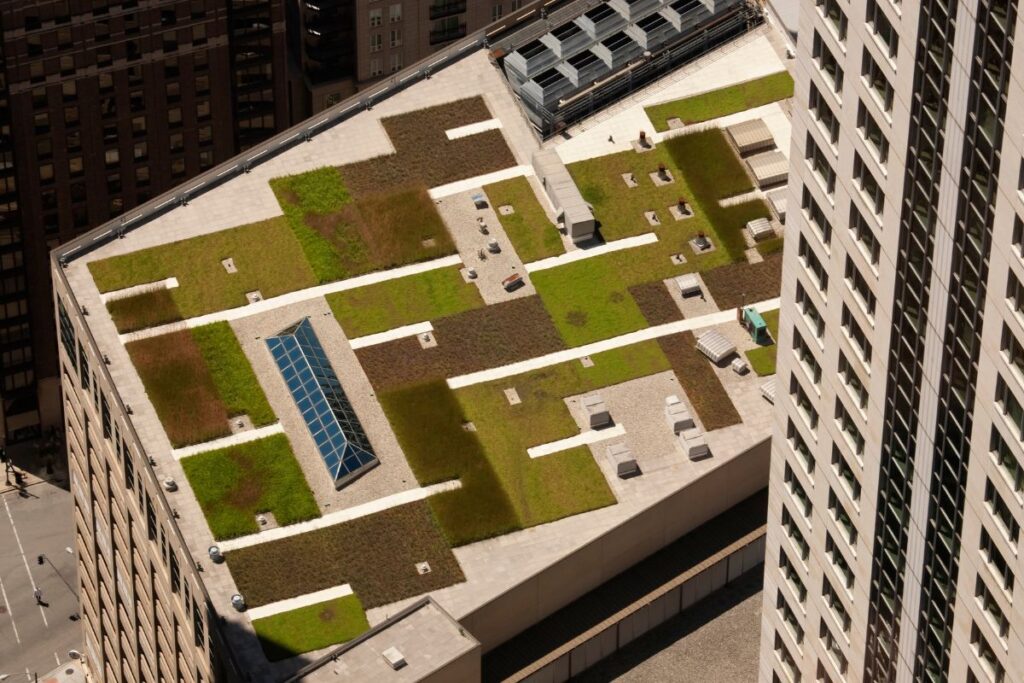
- Solar Panels: Solar energy is another popular choice for businesses looking to reduce their carbon footprint. Flat roofs offer an ideal platform for solar panel installations. Since the roof doesn’t slope, it’s easier to position the panels to capture maximum sunlight, making the building more energy-efficient and environmentally conscious.
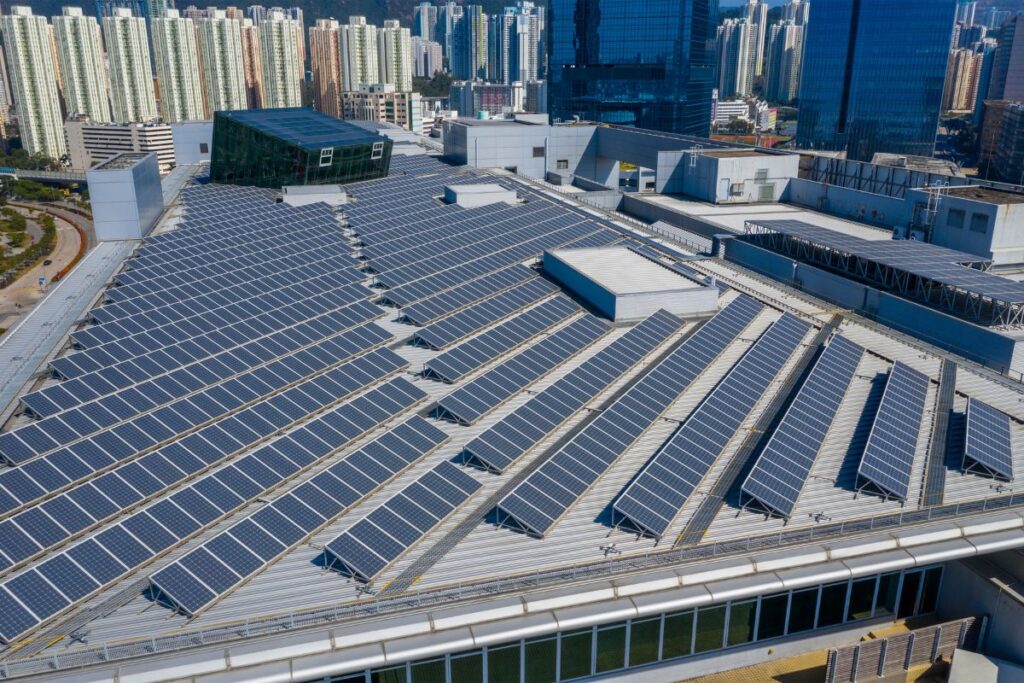
#5 Flat Roofs Have Urban Utility
If you’ve ever looked at the skyline of busy cities such as Oklahoma, you might notice that most of the commercial buildings have flat roofs. That’s not a coincidence. Flat roofs are more practical for urban environments where space is limited and buildings tend to go upward rather than outward. This is common in apartment complexes too.
Tall buildings, such as skyscrapers or high-rise office buildings, don’t necessarily need a sloped roof, and a flat one can actually help them fit better into the dense urban landscape.
Another great thing about flat roofs is that they make it easier to add additional stories to a building later on. If a business needs to expand or if there’s an opportunity to develop a higher structure, a flat roof can be modified to support more floors without requiring a complete redesign.
Also Read: Why Modern Architects Recommend Flat Roofs In Urban Areas
#6 Long-Term Performance And Maintenance
There is often a concern amongst building owners that flat roofs are more vulnerable to damage, especially roof leaks. But, when constructed properly, flat roofs are just as durable as pitched ones and can last a long time.
In fact, many commercial roofing materials, such as modified bitumen, thermoplastic polyolefin (TPO), and ethylene propylene diene monomer (EPDM), are specifically designed for flat roofs and can withstand extreme weather conditions. These resist water pooling (a common concern with older models), handle heavy foot traffic, and endure both hot and cold climates.
Flat roofs are easier to inspect, too. Since walking on them is safer, regular inspections and maintenance can be done quickly and efficiently, which can help prevent issues from developing in the first place.
Get Help From Oklahoma’s Top Roofing Contractors
Flat roofs make a lot of sense for commercial buildings due to their practicality, cost-efficiency, and space-maximizing potential. They simplify maintenance, provide extra usable space, and can easily support energy-efficient solutions like solar panels and green roofs. While they might not be as common in residential homes, for commercial spaces, flat roofs often end up being the smartest and most effective option.
If you’re thinking about designing or renovating a commercial flat roof, look no further than the team of A. Fricker Roofing and Waterproofing. With years of experience and a great reputation in the area, we ensure your job is done right!
(918) 402-7167 Call us today!
